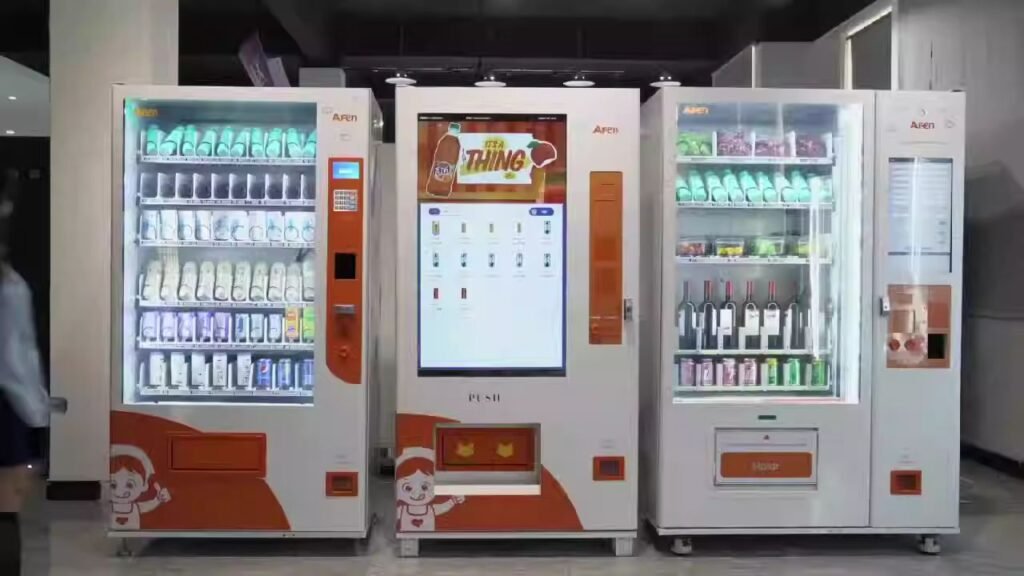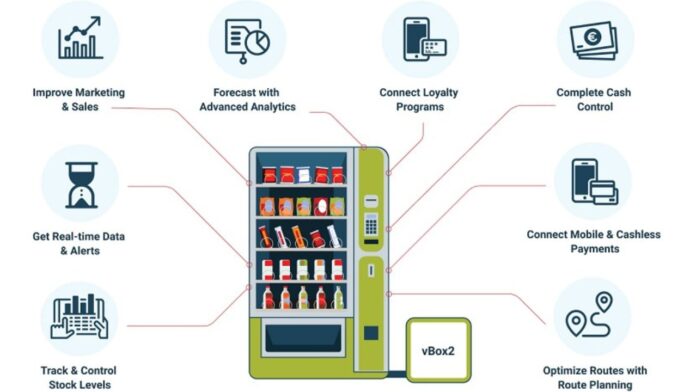When running a successful vending machine business, keeping track of your finances is essential. One way to do this effectively is using a vending machine business spreadsheet. This tool can help you manage expenses, track revenue, and analyze profits. This article will explore the importance of using a vending machine business spreadsheet and how it can benefit your business.
A vending machine business spreadsheet is a powerful tool that can help you stay organized and make informed decisions about your business. This tool tracks your inventory levels, monitors your sales performance, and calculates your profits. A spreadsheet also allows you to easily keep track of all your expenses, such as purchasing inventory, maintenance, and repair costs, and other overhead expenses. This will help you determine your total fees and compare them to your revenue to see if your business is profitable.
A vending machine business spreadsheet can also help you analyze your sales data. By inputting sales information into the spreadsheet, you can track trends in sales, identify your most profitable products, and adjust your inventory to optimize your sales. This data can also help you identify areas of your business that may need improvement, such as low-performing vending machine locations or products that need to be sold better.
A vending machine business spreadsheet can help you create a budget and set financial goals for your business. By inputting your revenue and expenses into the spreadsheet, you can create an economic forecast for your business and set targets for sales and profits. This can help you track your progress and adjust your business strategies.
A vending machine business spreadsheet can help you run your business more efficiently and effectively. By tracking expenses, analyzing sales data, and setting financial goals, you can make informed decisions to help your business succeed. Whether you are a new vending machine business owner or an experienced operator, a vending machine business spreadsheet is an invaluable tool that can help you take your business to the next level.
The vending machine business is a beacon of opportunity in entrepreneurial endeavors. From bustling office buildings to quiet street corners, vending machines offer convenience and quick access to snacks, beverages, and everyday items. However, behind the seemingly simple vending process lies a complex web of inventory management, revenue tracking, and strategic decision-making. This is where the power of a well-designed vending machine business spreadsheet comes into play.
The Vending Machine Business Landscape
Before delving into the intricacies of spreadsheet management, it’s crucial to grasp the fundamentals of the vending machine industry. Vending machines operate on a basic principle: provide goods to consumers in exchange for payment without human intervention. Yet, beneath this straightforward exchange lies a series of challenges that can make or break a vending business.
First and foremost is inventory management. Vending operators must ensure their machines are stocked with popular items while minimizing waste and spoilage. This requires careful monitoring of stock levels, understanding consumer preferences, and optimizing product selection.
Additionally, revenue tracking is paramount. Vending machine owners need to keep tabs on sales trends, revenue streams, and cash flow to gauge the profitability of their operations accurately.
The Role of Spreadsheets in Vending Machine Business Management

Enter the vending machine business spreadsheet, a dynamic tool that streamlines operations enhances decision-making, and drives profitability. A well-structured spreadsheet serves as the nerve center of a vending business, consolidating essential data and providing actionable insights.
Inventory Management
At its core, a vending machine business revolves around inventory management. A robust spreadsheet allows operators to track stock levels, monitor product performance, and forecast demand precisely. By maintaining a comprehensive inventory database, operators can make informed purchasing decisions and ensure that their machines are always stocked with high-demand items.
Leveraging spreadsheet formulas and functions simplifies inventory tracking. Automated alerts can notify operators when stock levels fall below a certain threshold, enabling proactive replenishment and preventing stockouts.
Revenue Tracking and Analysis
Revenue tracking is at the heart of vending machine business success. In addition to inventory management, a well-designed spreadsheet enables operators to monitor sales in real time, track revenue streams, and analyze performance metrics.
By inputting sales data into the spreadsheet, operators can generate comprehensive reports highlighting key performance indicators such as sales volume, revenue per item, and profit margins. These insights empower operators to identify lucrative locations, optimize product pricing, and fine-tune their vending strategies for maximum profitability.
Key Components of a Vending Machine Business Spreadsheet
While the specific layout of a vending machine business spreadsheet may vary depending on individual needs and preferences, several key components are essential for effective management:
- Inventory Database: A centralized repository of all stocked items, including product names, quantities, and unit costs.
- Sales Tracker: A tool for recording sales transactions, tracking revenue, and generating performance reports.
- Expense Tracker: A section for logging expenses such as restocking fees, maintenance costs, and machine rentals.
- Profit & Loss Statement: An overview of revenue, expenses, and net profit to assess the business’s financial health.
- Forecasting Tools: Features for predicting future sales trends, estimating demand, and optimizing inventory levels.
Conclusion
Success hinges on effective management and strategic decision-making. A well-designed vending machine business spreadsheet catalyzes growth, enabling operators to streamline operations, track performance, and drive profitability.
By leveraging the power of spreadsheets, vending machine operators can unlock new levels of efficiency, agility, and insight, positioning their businesses for long-term success in an ever-evolving market landscape. So, if you’re ready to take your vending business to new heights, embrace the power of the spreadsheet and watch your profits soar.
FAQ
How to Do Accounting For a Vending Machine Business?
To account for a vending machine business:
- Maintain meticulous records of machine purchases, product inventory, and sales transactions.
- Regularly reconcile cash collected with the product sold, accounting for any discrepancies.
- Track expenses like restocking and maintenance to accurately assess profitability and manage finances effectively.
How to Create a Business Plan For a Vending Machine?
To craft a vending machine business plan, define your target market and location strategy. Outline startup costs, including machine purchase and stocking expenses. Detail revenue projections, considering foot traffic and product selection. Lastly, include marketing tactics to attract customers.
Is a Vending Machine Business Profitable?
Vending machine businesses can be profitable with careful planning and location selection. Foot traffic, product selection, and maintenance costs impact profitability. Researching demographics and consumer preferences is key to maximizing returns in this industry.
How to Evaluate a Vending Machine Business?
When evaluating a vending machine business, assess factors like location traffic, product variety, and machine maintenance. Analyze revenue trends, operating costs, and growth potential. Consider customer preferences and market demand to ensure profitability and sustainability.
What is the Monthly Income of a Vending Machine?
The monthly income of a vending machine varies depending on factors like location, foot traffic, and product selection. On average, a well-placed machine can generate several hundred to a few thousand dollars in revenue per month, yielding a profitable return on investment.
How to Calculate Vending vending Profit?
To calculate vending machine profit, subtract the total cost of goods sold (COGS), including product expenses and machine maintenance, from the total revenue generated. Divide the result by the total income and multiply by 100 to get the profit margin percentage.

